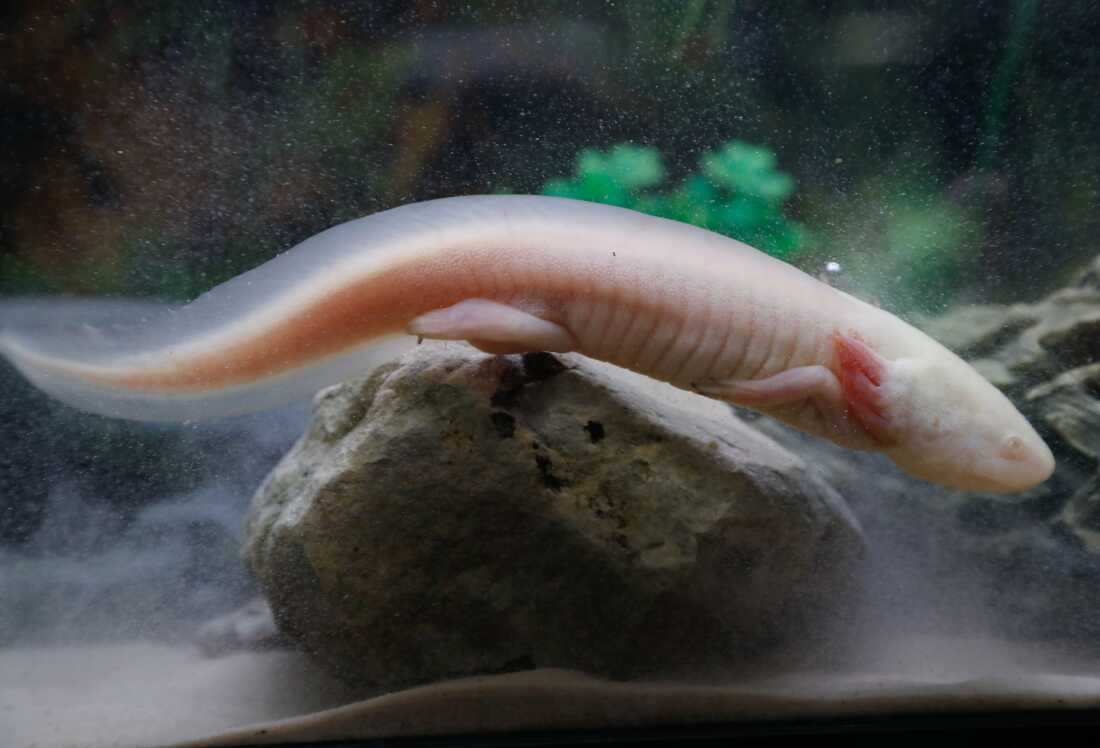An axolotl, also called a Mexican salamander, is pictured at a store in Paris.
Francois Guillot/AFP through Getty Photographs
conceal caption
toggle caption
Francois Guillot/AFP through Getty Photographs
Followers of the long-lasting axolotl might see the critically endangered species stage a comeback in its native Mexico Metropolis, as researchers introduced their findings that captive-bred axolotls can survive within the wild.
Researchers on the Autonomous College of Baja California this week stated that they tracked a complete of 18 captive-bred axolotls — 9 male and 9 feminine — which had been launched throughout two aquatic places in southern Mexico Metropolis in 2017 and 2018.
“What we learned is if we can reintroduce these axolotls that have been in captivity to the restored wetland where the water conditions are ideal for the axolotls, they can survive,” stated Alejandra Ramos, lead researcher on the research revealed within the scientific journal PLOS One.
“This is pretty big news because when you have animals in captivity, they lose a lot of their behaviors. Like, they don’t know how to recognize a predator, they don’t know how to catch prey, and so we were a bit nervous when we released them because we didn’t know if they were going to be able to survive,” she continued.
However the charmingly cartoonish salamanders, also called Mexican strolling fish, did not simply survive of their new wild properties, they thrived.
“The ones that we recaptured, they had gained weight. So that means they were doing really, really well,” Ramos stated.
“They were hunting, they were eating, and they were avoiding predators. So this was really big,” she stated.
Axolotls — named for the Aztec god of fireside and lightning, Xolotl — are native to the lakes of Mexico’s capital. However their colourful, whimsical appears to be like have gained them admirers the world over.
The unique aquatic critters are additionally a favourite amongst medical researchers, who hope that the amphibians’ excessive regenerative skills — right down to the flexibility to revive their very own mind, coronary heart and lungs — might ultimately assist docs higher deal with catastrophic accidents in individuals.
Regardless of their reputation, axolotls are critically endangered within the wild as a consequence of human interference and air pollution of their habitats, with estimates of simply 50 to 1,000 adults left within the wild.
The axolotls studied by Ramos and her crew had been launched in each synthetic and restored wetlands.
The animals’ capacity to outlive in each environments was an extra layer of success. The research notes that if axolotls might survive in man-made habitats, it might assist cut back the damaging results of habitat degradation and local weather change.
For Ramos, who has been engaged on this analysis since 2017, the flexibility to assist save the axolotl goes past simply science.
“For Mexicans, they’re part of our culture, they’re part of our history. And that makes them really special to us,” she stated.







